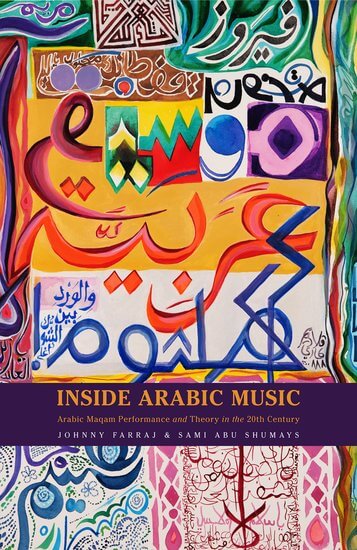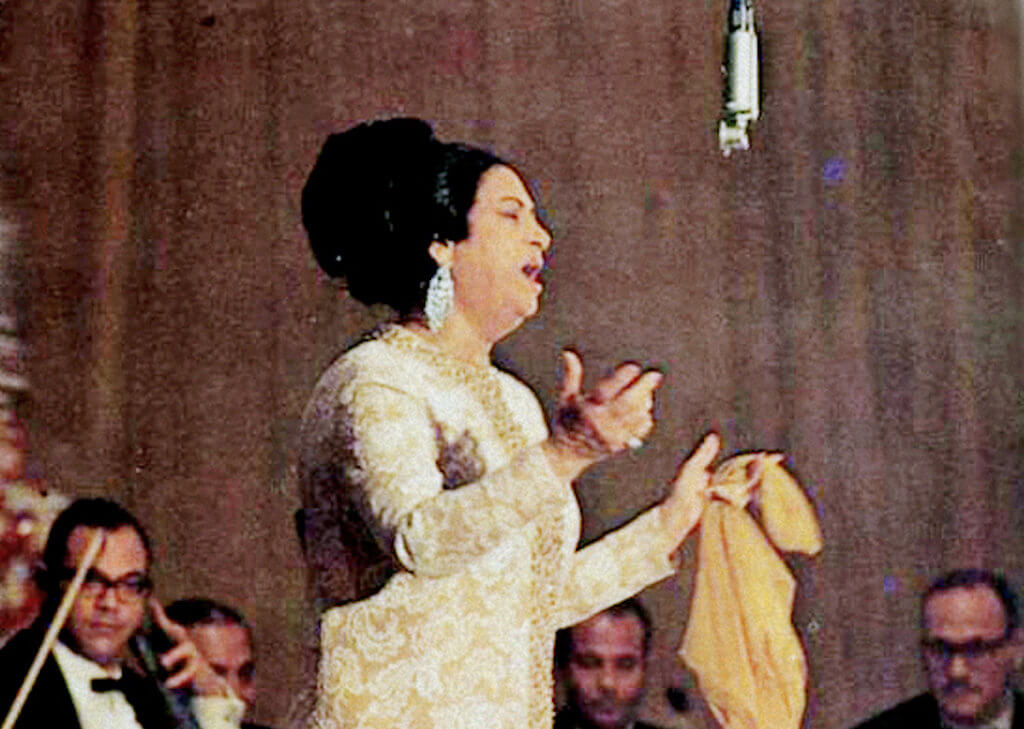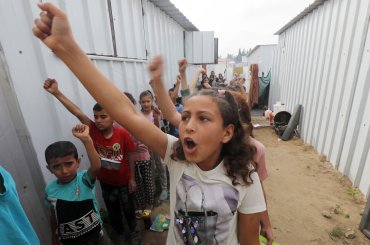INSIDE ARABIC MUSIC
Arabic Maqam Performance and Theory in the 20th Century
by Johnny Farraj and Sami Abu Shumays
pp. 480. Oxford University Press $39.95
As a Palestinian, I have always struggled to explain my Palestinian and Arab culture to non-Arabs. Why do we value family so much? Why are we so social and love it when guests come? Why is it that when we have a guest over, we always offer them Arabic coffee, no matter what time of day or night it is?
Over the past four or five years of my life, I have become extraordinarily connected with my culture, specifically its music. When I was young, I hated listening to Arabic music. This could be attributed to the fact that a significant part of my childhood was spent living and studying in non-homoegnous Palestinian communities. This is because my parents always valued my education and did not care if I studied at a Jewish school for 5 years, or an American school for 3 years. Thus, for the first 14 years of my life, I lived in primarily non-Arab communities; hence, I was much more exposed to other cultures than Arabic cultures, which is why I did not acquire a taste for Arabic music. While I did have a few favorite songs in Arabic, such as Man Sharadly el-Ghazala, Dakhlek wel-Hawa, and Haday Haday by Tony Hanna (who was, and still is, one of my favorite Arabic artists), the vast majority of Arabic music sounded, to me, the same (which, now that I know better, is far from true).
However, that all changed when I moved to an Arabic school in the heart of Nazareth – the largest Palestinian city in Israel, and the political, social, and cultural epicenter for Palestinian citizens of Israel. Once I was in a homogenous Arab community, I was slowly exposed to Arabic music and eventually became fully indulged in it. Gradually, I became more aware of how vastly rich our culture is, not just our music. What Arabic culture was able to produce in a span of a few decades in the mid to late 20th century – from music to literature to theater – is unrivaled. This surge in cultural developments and enrichment has only been seen a handful of times in human history.
I garnered deep respect, pride, and appreciation for my culture. My past self would not recognize me today. Today, I listen to the Greats of Arabic Music – Farid al-Atrash, Abdel Halim Hafez, Umm Kulthum, Sabah Fakhri, Fahd Ballan and more – from the 50s, 60s, and 70s – something rarely seen today, even by older generations. In fact, one day, while working, I was listening to Noura Ya Noura by Farid al-Atrash (one my favorites), my father, walking past me, said, “In forty years I have not seen anyone put on and listen to Farid al-Atrash!”
While music from this era, known as the “Golden Age” of Arabic music, is no longer topping the charts obviously, it is still very much loved, relevant, and extremely popular even today. I mean, it is literally everywhere in Arabic culture. In every song competition, from Arab Idol and the Arab version of The Voice and The Voice Kids, contestants almost always sing songs from this era, due to their popularity but also due to their extremely difficult nature, which, if you are able to sing them well, is extraordinarily impressive. And so, as I further fell in love with the music from this era, my mind was flooded with questions about it, wanting to learn more.

That is when I came across the book Inside Arabic Music by Johnny Farraj and Sami Abu Shumays, which was a full and intricate exploration of Arabic music from the 20th century. And when I say intricate, I mean it in every sense. It explores not only Arabic music as a whole, but also covers each and every instrument most commonly used in it, from the ‘oud and tabla to the violin and saxophone. It is the greatest and most comprehensive source of information regarding Arabic music currently out there.
The book explores Arabic music extremely in depth, covering everything from the tuning system to intonation to ensembles. However, despite all the musical terminology which would more likely benefit someone involved in the art form, I was able to thoroughly understand everything written and discussed, even without a thorough background in music theory.
However, the book’s greatest achievement is its ability to accurately reflect Arabic culture as a whole. I would argue that if one were interested in understanding Arab culture, it is sufficient for them to simply read the introduction of the book (although I would highly recommend reading it entirely).
In a section titled A Communal Character in the introductions, the authors explain that recording Arabic music in a studio is very challenging. This is due to the fact that the “recording separates the musician from his or her audience, interrupting a connection called ‘audience feedback,’ which is indispensable for the artist’s creative process.” In other words, Arabic music is not created by composers, musicians, and singers, but by the Arab people as a whole. The artist and people feed off of each other in order to truly bring a song to life, a testament to the very social nature of Arabic culture.
In many songs performed by Umm Kulthum, Abdel Halim Hafez, and Farid al-Atrash, the crowd erupts in cheering and clapping (like one would at a football game) whenever the artist or orchestra perform a part they thoroughly enjoyed. Such interaction often leads the artist to repeat a certain part of the song over and over, as the audience enjoyed it so much.
Another unique aspect of Arabic music is improvisation. As the audience and artists feed off each other’s energy, the orchestra (and artist many times) must adapt to the flow of the song. Meaning, if an artist wants to repeat a certain verse because the audience was cheering so much, the orchestra must be ready to seamlessly transition back to it. That is why, oftentimes, an Arabic orchestra has no conductor, as they focus on the artist singing when playing. Unlike Western music, Arabic music does not adhere to precise unison, instead, musicians constantly improvise and adapt to the performance as it goes along. This, in turn, further enriches Arabic music as each performance is personalized for the audience and unique in its own way.
Farraj and Abu Shumays, while focusing on exploring Arabic music, have actually shed light on Arabic culture as a whole. It is a culture based on community and social interaction. It is one which greatly appreciates and cultivates art, especially music as it is a means for social gatherings to occur. While Arabic culture may seem overwhelming to those outside of it, its spontaneous nature comes from a sense of inclusion and enjoyment.



I wonder how much credit is given to the immense contribution that was made by Jews to Arabic music before the establishment of the state of Israel.
The Jewish community in Iraq liked instrumentalists and treated them with respect for their skills and their artistic talents. Thus, during the first half of the twentieth century, Jews were virtually the only instrumental players in Iraq. They were the musicians of the Iraqi people. In 1932, for example, all the instrumentalists who attended the first Arabic music congress in Cairo were Jews.
When Iraq Radio was first established in Iraq in 1936, the entire instrumental ensemble, apart from the percussion player, was Jewish. Almost all instrumentalists in the night-clubs of Baghdad were Jews. For this reason, on Yom Kippur and Tish’a ‘be-Ab, the two most solemn days in the Jewish calendar when Jews did not play music, no live music was broadcast on Iraq Radio; only records were played.